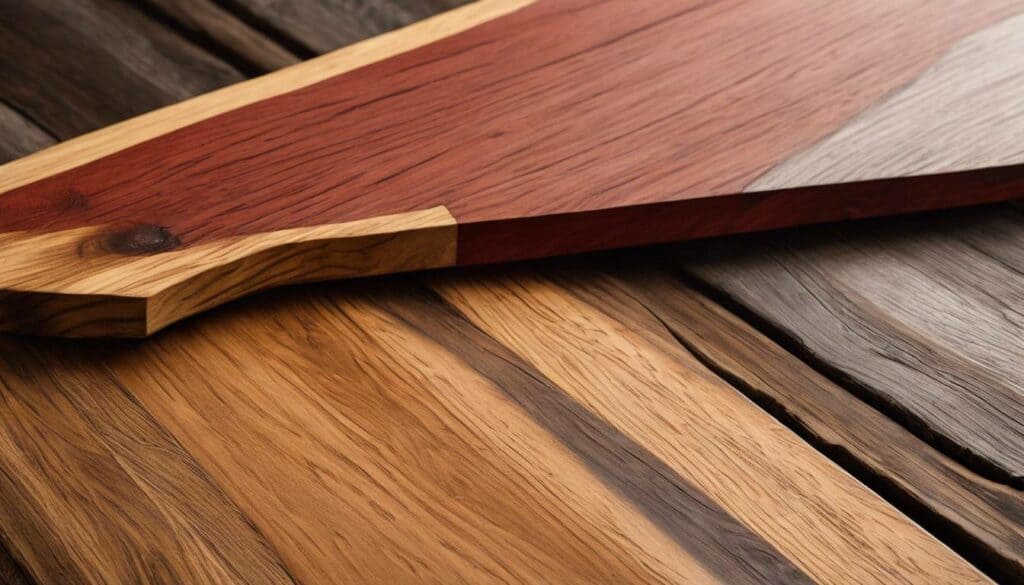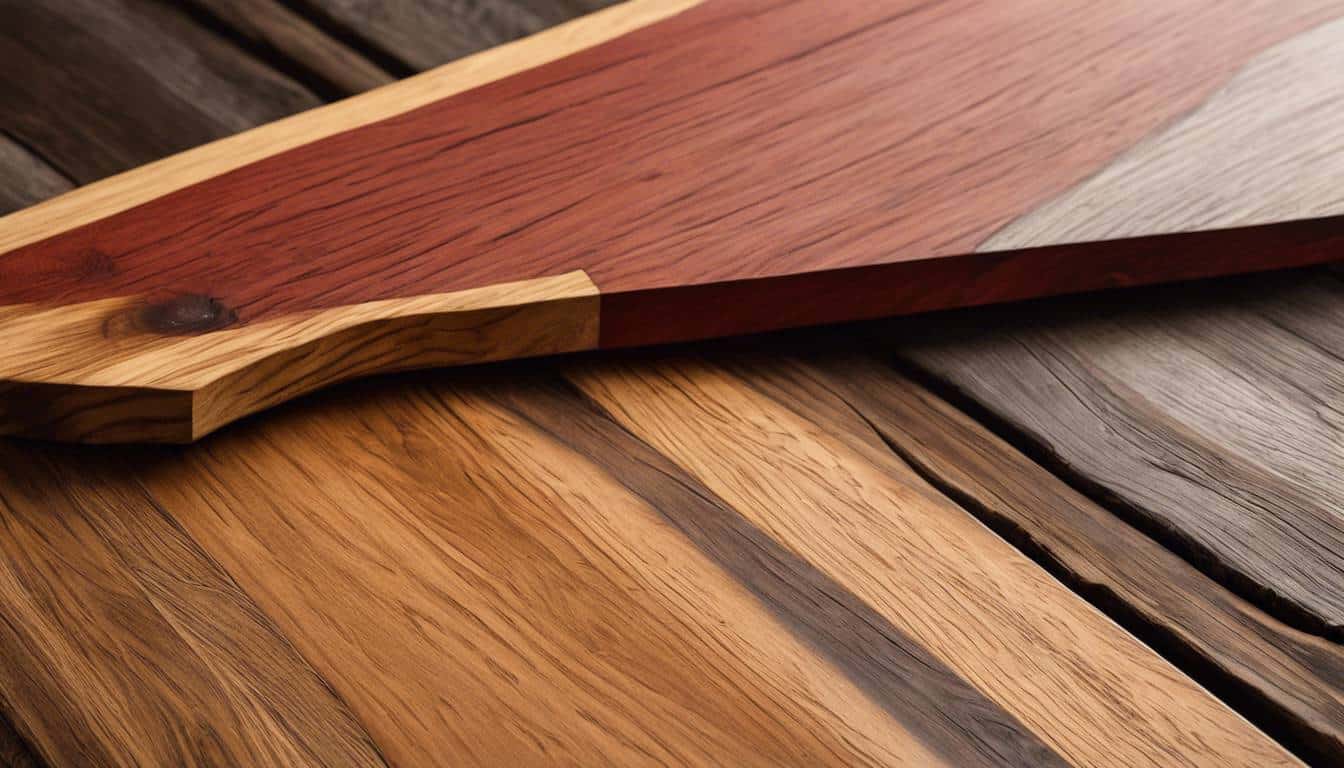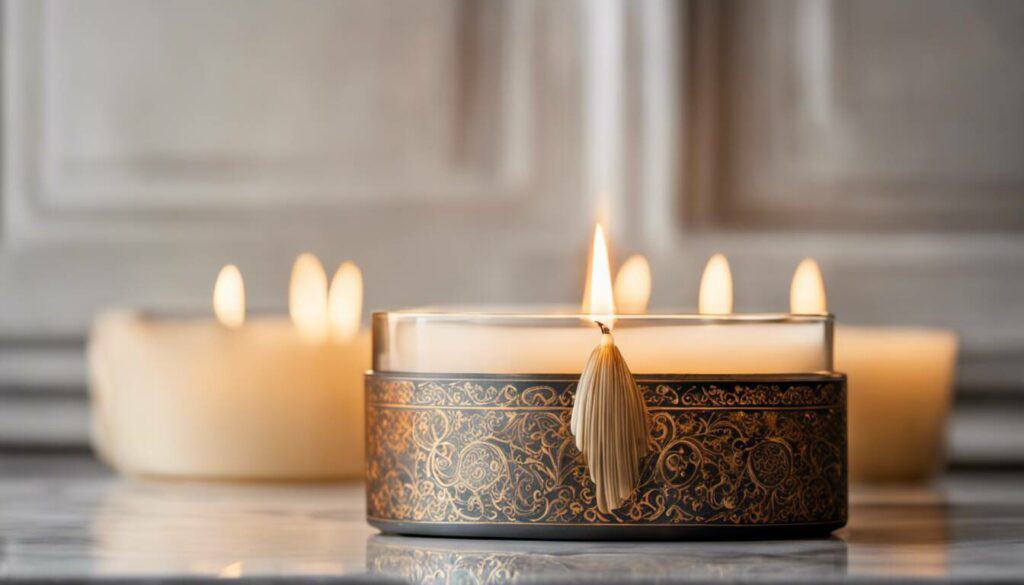Exploring the subtleties between red oak and white oak has been a journey of discovery for me, particularly when it comes to choosing the perfect wood for flooring. Each possesses its own unique characteristics and benefits, making the decision a deeply personal one. Red oak and White oak, while both being popular hardwood choices known for their strength, have unique characteristics that set them apart. Red oak, with its lesser cost factor and pinkish hue, provides a more pronounced grain pattern often appealing to those looking for a traditional setting. On the flip side, White oak offers a subtle tight grain pattern in a lighter color, making it a perfect fit for modern interior aesthetics. Yet, the choice between these two isn’t just about design preference; it often hinges on the specific requirements of your project. Now, let’s delve deeper into these prominent differences…
Red oak and white oak differ in their rot resistance, with white oak being more resistant. Additionally, when distinguishing between the two, looking at the endgrain can be helpful—red oak has porous pores while white oak’s pores are plugged with tyloses. This difference in structure contributes to their varying positions on the wood hardness scale. It’s also important to note that white oak is generally considered of higher quality and can feature a unique ray fleck pattern known as “tiger oak” when quartersawn.
Red Oak vs White Oak: Overview
When it comes to hardwood flooring, red oak and white oak emerge as two of the most popular choices. These woods are celebrated for their resilience and have long been favored for use in both construction and interior design. Despite their shared reputation for strength and durability, they possess unique properties that cater to different needs and aesthetics.
Red oak, with its subtle pinkish hue and distinct grain pattern, offers a warm, traditional look that has been a staple in American homes for generations. Meanwhile, white oak boasts a light to medium brown color with a straight, closed grain that gives off a more contemporary vibe. These characteristics make them popular choices for ash oak flooring alternatives.
It’s essential to recognize that the decision between these two woods isn’t solely based on cost; it’s about understanding how their individual characteristics align with your specific project requirements.
One key point of differentiation lies in their Janka hardness ratings—red oak scores 1290 while white oak sits slightly higher at 1360. This variation influences their suitability for high-traffic areas; while both are durable choices, white oak is particularly well-suited for spaces that see heavier foot traffic due to its enhanced hardness.
To put it in perspective, if you have an active household bustling with kids or pets, white oak may be the better fit as it can better withstand the wear and tear that comes with daily activity. On the other hand, if you’re seeking a more budget-friendly option without sacrificing quality, red oak could be the ideal choice. This decision-making process is similar to when homeowners compare hickory vs maple flooring for their specific needs.
Understanding these nuances empowers homeowners and designers to make informed decisions based on their preferences and the specific demands of their projects. The next section will further explore how these differences manifest in practical applications and what factors should be considered when making a selection.
As we continue our exploration of wood flooring, let’s delve into the intricate details that set apart the color and grain differences between red oak and white oak.
Color and Grain Differences
When it comes to the visual aspect of red oak versus white oak, the color and grain patterns certainly stand out as key distinctions. Red oak boasts a warm, reddish-brown hue with prominent, open grain patterns that add depth and character to the wood. In contrast, white oak showcases a lighter, more neutral color palette, ranging from light to dark brown, often with a grayish or olive undertone. This distinct variation in color makes white oak the more versatile option, blending effortlessly with a wider range of interior design styles.
The Beauty of Grain Patterns
Each type of wood also presents unique grain patterns that contribute to its overall aesthetic appeal. Red oak is characterized by pronounced grain lines and a bold, dramatic appearance due to its open grain structure. On the other hand, white oak exhibits a tighter, more uniform grain with delicate ray flecks, known as “tiger rays,” which create a subtle yet visually captivating effect across the wood surface. These distinctive grain characteristics not only influence the overall look of the wood but also play a significant role in determining its suitability for different design preferences and applications.
Imagine walking into a cozy traditional living room adorned with rich red oak flooring, exuding timeless elegance and warmth. The prominent grain patterns and reddish hues of the red oak create an inviting atmosphere that complements classic furnishings and decor. Meanwhile, picture a modern interior space featuring sleek white oak accents—its lighter tones and subtle grain details harmonizing seamlessly with contemporary minimalist aesthetics, adding an air of sophistication and simplicity to the environment.
The versatility offered by these contrasting wood types allows homeowners and designers to tailor their interior environments to specific themes and styles. Whether it’s the enduring charm of traditional decor or the clean lines of contemporary design, the distinct colorations and intricate grain variations of red and white oak provide endless possibilities for creating unique, captivating spaces.
By understanding the nuances of color and grain patterns in red oak and white oak, you can make well-informed decisions when selecting wood for your flooring or interior design projects. The next section will further explore additional considerations to help you determine which type of wood best suits your specific aesthetic preferences and functional needs.
Understanding Growth and Durability
Red oak and white oak are distinct not only in appearance but also in their growth rate and durability. Both red oak and white oak grow at a pace of 1-2 feet per year. However, their durability sets them apart, with red oak measuring between 45-47 lbs/ft3 and a Janka hardness of 1290 lbf, while white oak has a slightly higher density ranging from 47-49 lbs/ft3 with a Janka hardness of 1360 lbf.
The higher density of white oak signifies that it’s more resistant to wear and tear, making it an excellent choice for heavy-use areas such as flooring. This increased density gives it the edge when it comes to withstanding the impact of foot traffic or regular use. In contrast, red oak may be more prone to dents and scratches over time.
To put this into perspective, imagine the floors of a bustling cafe or a busy kitchen. White oak would likely hold up better in these environments due to its enhanced durability, providing longevity and requiring less maintenance than red oak.
Furthermore, when we consider outdoor applications such as furniture, boatbuilding, or exterior construction projects where exposure to moisture is inevitable, white oak outshines red oak. Its resistance to moisture and decay makes white oak the preferred choice in these scenarios. This attribute ensures that white oak maintains its integrity even when subjected to harsh outdoor conditions.
In summary, while both red oak and white oak share similar growth rates, their densities and durability differ. White oak’s superiority in terms of resistance to wear and tear makes it a highly sought-after option for flooring and outdoor projects where its ability to withstand environmental stressors is paramount.
As we shift our focus from growth rates and durability to the texture and staining properties of red and white oak, we uncover a whole new realm of considerations when choosing between these two popular woods.
Texture and Staining Properties Comparison
The texture of wood plays a critical role in how it responds to staining and its overall appearance. When it comes to the debate of red oak vs. white oak, differences in texture are quite apparent. White oak typically boasts a smoother and tighter grain pattern compared to the slightly coarser texture of red oak.
This difference can significantly impact the staining process, leading to varying visual results that could influence your choice for flooring or woodworking projects. Due to its smoother grain, white oak tends to absorb stain more uniformly which can result in a consistent and refined look when stained. On the other hand, red oak tends to absorb stain more evenly, resulting in a more uniform appearance.
Imagine two canvases—one with rough grooves and ridges, the other with a smooth surface. When you apply paint to them, the canvas with smoother surface will present a more even finish while the one with rough texture might create an uneven effect due to the porous nature.
In addition to their differing textures, it’s important to consider their staining properties. The pores of white oak are plugged with tyloses, making it more resistant to moisture. This feature makes white oak ideal for situations where water exposure is a concern, such as in bathrooms or kitchens where spills are common.
On the contrary, the open pores in red oak make it less resistant to water compared to white oak. This characteristic makes red oak a better fit for indoor applications where moisture levels are more controlled. It’s evident that each type of wood brings its own set of advantages based on its texture and staining properties.
Understanding the distinct characteristics of these oaks provides valuable insights for making informed decisions about using them in different projects—you’re now armed with essential knowledge that will guide you through choosing the right type of wood for your specific needs.
Red and White Oak for Interior Applications
When choosing the right wood for your interior design, whether it’s flooring, cabinetry, or furniture, it’s essential to consider not just the appearance but also the durability and suitability for the specific environment. Each type of wood has its strengths that make it ideal for different applications within your home.
Red Oak for Interior Use: Renowned for its warm tones and prominent grain patterns, red oak is a popular choice for interior flooring, cabinetry, and furniture. The distinct grain patterns give it a traditional and rustic look that can add character to any space.
White Oak for Interior Use: On the other hand, white oak is often preferred for interior millwork, cabinets, and furniture due to its exceptional resistance to moisture. This characteristic makes it particularly suitable for kitchen and bathroom applications where exposure to moisture is more common.
It’s worth noting that both red oak and white oak offer unique aesthetic appeal. Red oak has a slightly paler and redder hue on average, while white oak tends to have a slightly more olive hue. These differences in color can influence the overall look and feel of the interior space where they are used.
Imagine walking into a traditional kitchen with rich red oak cabinetry and flooring that exudes warmth and timeless appeal. In contrast, picture a modern bathroom with sleek white oak millwork and cabinets that beautifully complement the clean, contemporary design.
Understanding these subtle distinctions can help homeowners and interior designers make informed decisions when selecting the appropriate wood for different areas within their homes.
By considering the specific qualities of each type of wood and how they align with the requirements of various interior applications, you can create functional and visually appealing living spaces that stand the test of time.
With a solid understanding of the varied applications of red and white oak in interior settings, let’s now explore their specific suitability in one of the most frequented spaces within homes—the kitchen.
Pros and Cons of Oak Flooring for Kitchens
The kitchen is often referred to as the heart of the home, a bustling space where family gatherings occur and delicious meals are prepared. When it comes to choosing the right flooring for such an important area, oak stands out as a popular and enduring choice. Let’s delve into the pros and cons of using red oak and white oak for kitchen flooring.
Pros and Cons of Red Oak and White Oak Flooring in Kitchens
Red Oak
Red oak flooring can bring a cozy warmth to any kitchen with its inviting and timeless appearance. Its appeal lies in its affordability, making it an attractive option for those seeking a classic, natural look without breaking the bank. Another advantage of red oak is its versatility when it comes to staining options. Whether you prefer a light, medium, or dark finish, red oak can adapt to various design preferences.
However, one drawback of red oak flooring in kitchens is its susceptibility to water damage compared to its white oak counterpart. The pores of red oak can also be prone to trapping dirt and debris, which may require more frequent maintenance and cleaning in a high-traffic area like the kitchen.
White Oak
White oak flooring boasts superior resistance to moisture and decay, making it an ideal choice for kitchen environments where spills and humidity are common. Its lighter appearance reflects more light, brightening up the space and creating an airy feel. Additionally, white oak’s adaptability to various design styles allows for seamless integration into both traditional and contemporary kitchen aesthetics.
On the other hand, while white oak offers remarkable benefits for kitchen flooring, it tends to come with a higher cost compared to red oak. This cost difference may be a limiting factor for some homeowners when deciding between the two types of oak. Additionally, white oak offers limited natural color choices, which may present challenges when trying to align the floor color with the overall kitchen design scheme.
Considering these factors will help you make an informed decision when choosing between red and white oak for your kitchen flooring, ensuring not only a beautiful aesthetic but also practical functionality.
Each type of oak clearly has its own set of advantages and trade-offs when it comes to kitchen flooring. So it’s essential to weigh these factors against your priorities and preferences to make the best choice for your home.






